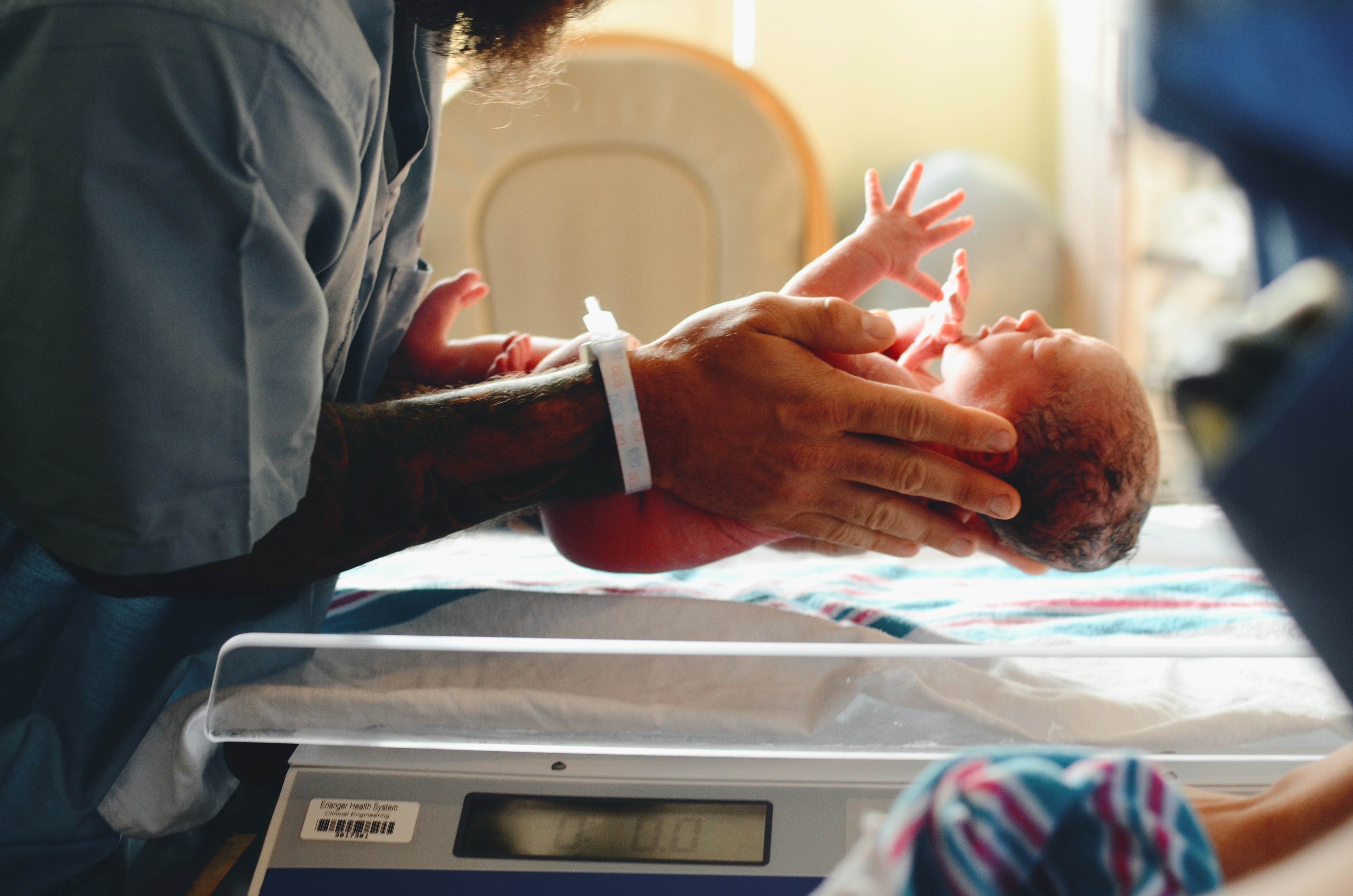Sometimes babies suffer a physical injury during the birth process, known as birth trauma or birth injury. Several factors contribute to a difficult birth and resulting birth injury. Large babies over eight pounds and premature babies born before 37 weeks are at risk for a difficult birth. Cephalopelvic disproportion, in which the mother’s pelvis’s size and shape can’t support vaginal birth, dystocia (difficult labor or childbirth), and prolonged labor are also causes of birth injury. Finally, abnormal birthing presentation and maternal obesity contribute to a birth injury.
Doctors will often recommend a cesarean delivery (C-section) for a large fetus estimated to weigh more than 11 pounds. A fetus lying in an abnormal position in the uterus before birth is more likely to suffer a birth injury. The natural forces of labor and delivery are the common causes of birth injuries. Using a surgical instrument such as forceps to pull the fetus down from the birth canal runs a high risk of causing a birth trauma. They are used in the final stages of delivery and often on a limited basis.

Even with precautions, medical professionals can make mistakes that result in a birth injury. You can take legal action and file a birth injury claim within the statute of limitations. Still, it’s a good idea to work with an experienced birth injury attorney when dealing with a sensitive matter. Schwaner Injury Law has years of experience providing legal advice and representing birth injury cases.
The legal team’s practice areas include traumatic brain injury, car accidents due to negligence, construction accidents, dog bites, medical malpractice, product liability, slip and fall accidents, spinal cord injury, and wrongful death cases. Whether negligence, misdiagnosis, or carelessness has caused you or a family member serious injury, request a free consultation with an expert birth injury attorney in Chicago who can win you fair compensation for medical bills and ongoing medical treatment.
Common Types of Birth Injuries

There are several different types of birth injuries that babies can suffer during the delivery process. Most birth injuries heal without treatment, but in some cases, they can result in long-term medical conditions that impact the quality of life.
The most common birth injuries include:
Brachial palsy: This is an injury to the brachial plexus when it is difficult to deliver the baby’s shoulder, called shoulder dystocia. The ability to flex and rotate the arm will return after a few months if the birth injury caused swelling and bruising to the nerves. Permanent nerve damage is possible when the nerve is torn, in which case physical therapy exercises are used to maintain range of motion. Erb’s palsy results when the damage to the brachial plexus leaves the arm weak or without sensation, and in some cases, paralysis of the arm occurs.
Perinatal asphyxia: a newborn may suffer oxygen deprivation during childbirth because of a genetic abnormality, blood loss, pressure on the umbilical cord, or an infection. Cerebral palsy is a common congenital disability resulting from perinatal asphyxia. Scoliosis is common with cerebral palsy and often causes a physical disfigurement that makes walking and standing difficult. There are several types of scoliosis, such as congenital scoliosis, idiopathic scoliosis, and neuromuscular scoliosis. Scoliosis patients often use a brace to correct the curve of the spine. A specialist may recommend surgical treatment for severe scoliosis to help correct the curvature of the spine.
New Jersey Neck & Back Institute, P.C. provides scoliosis treatment performed by a board-certified spine surgeon. A spinal fusion surgery uses screws to join the vertebrae to provide stability to the spinal curvature and improve the patient’s posture. No matter what type of scoliosis you suffer from, there is more than one treatment plan that can alleviate back pain and improve life quality.
Bruising or forceps marks: passing through the birth canal during the delivery process can cause bruising on the face or head. The use of forceps can leave temporary marks or bruises on the face, while vacuum extraction can cause scalp bruising or lacerations.
Facial Paralysis: pressure on the baby’s face during the birth process can injure the facial nerve. Facial paralysis is visible when a baby cries, as the injured side of the face doesn’t move, and the eye can’t close. The paralysis typically improves after a few weeks, but surgery may require the nerve to be torn.
Fractures: a fracture of the clavicle may occur when it is difficult to deliver the baby’s shoulder or during a breech delivery. The clavicle heals quickly, but the baby can’t move its arm while healing.
Birth injuries can happen during the natural birth process, and most of the time, they heal without treatment. Sometimes, depending on the severity and type of birth injury, long-term health issues can result.











